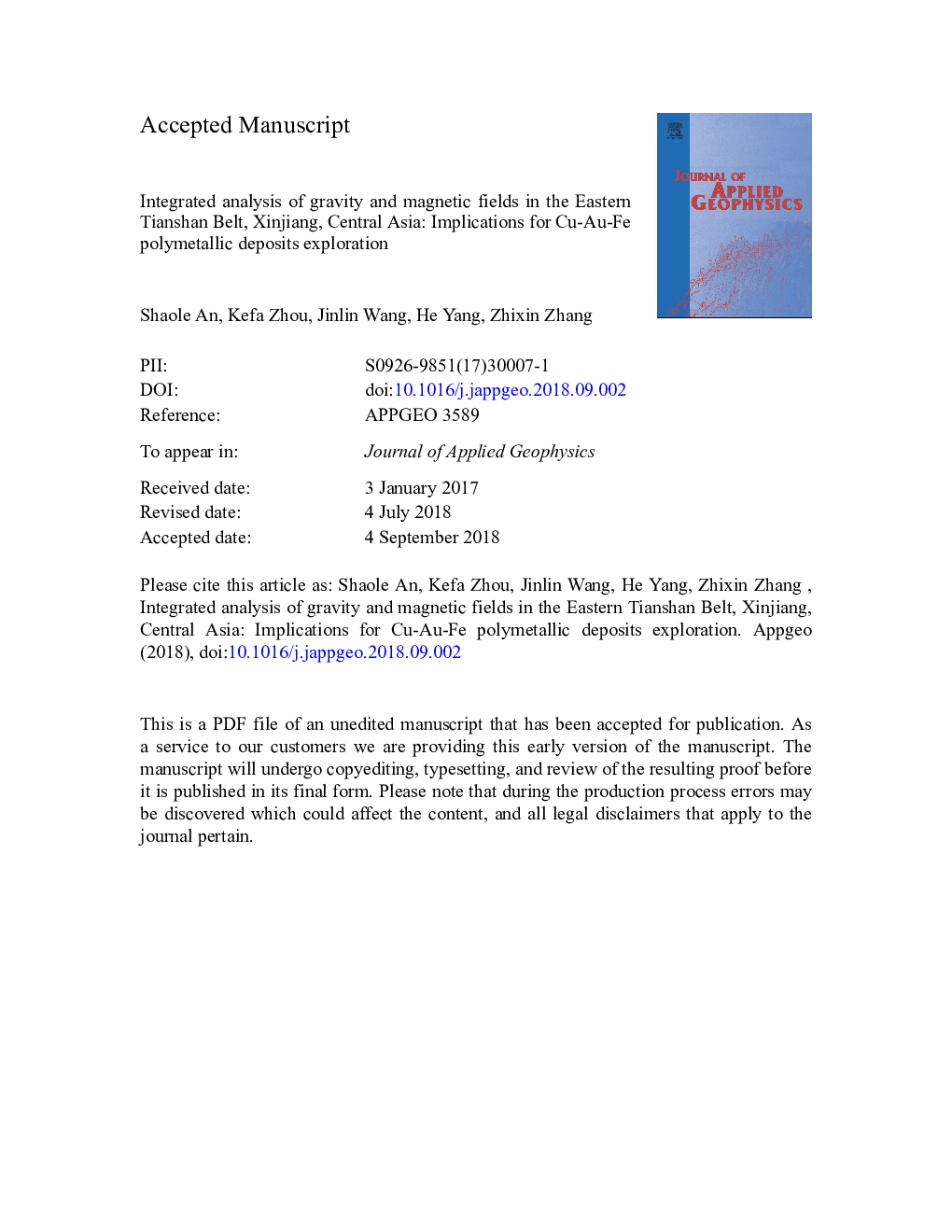| Article ID | Journal | Published Year | Pages | File Type |
|---|---|---|---|---|
| 11033038 | Journal of Applied Geophysics | 2018 | 38 Pages |
Abstract
The eastern Tianshan belt, an important part of the Central Asia metallogenic province, has attracted a large amount of attention in terms of its geological structures and mineralization processes. This study intends to analyze the geological structures and metallogenic characteristics of the eastern Tianshan, for determining the distribution pattern of polymetallic deposits and guiding for polymetallic minerals exploration by analysis of gravity and aeromagnetic and seismic data. Long wavelength gravity and magnetic anomalies reflect differences among the basement structure in this area, and the residual gravity and magnetic anomaly highs reflect the uplift of the upper Paleozoic and high-density volcanic rocks. The results of various edge recognition techniques provide detailed structural information: the major fault structures are nearly EW, NEE, and NW-trending and the massive rocks and ore deposits extend east-west in the study area. Regional mineralization is closely related to the tectonic-magmatic activity and to the deep faults in basement. The eastern Tianshan can be divided into three different series of polymetallic metallogenic belts by the Kangguertag-Huangshan and Aqikekuduk fault zones. We may indicate the most favorable areas for prospecting polymetallic deposits, which are located near the places such as the EW-NEE trending structure zones or at the intersection of several sets of structures. Our synthesis and interpretations may provide important reference for further research on regional dynamics and mineralization in the eastern Tianshan.
Related Topics
Physical Sciences and Engineering
Earth and Planetary Sciences
Geophysics
Authors
Shaole An, Kefa Zhou, Jinlin Wang, He Yang, Zhixin Zhang,
